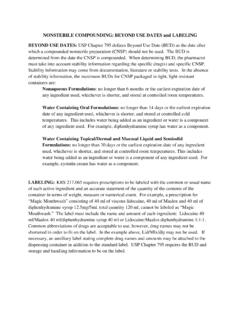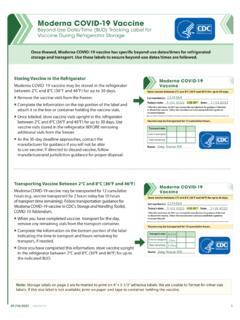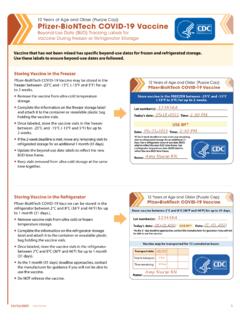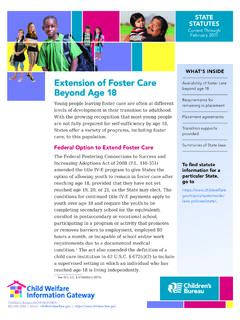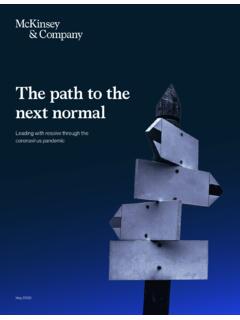Transcription of Army Talent Management Strategy, Force 2025 and Beyond
1 Army Talent Management Strategy Force 2025 and Beyond Ready, Professional, Diverse, and Integrated 20 September 2016 2 Table of Contents CHAPTER 1 3 1-1. 3 1-2. 4 1-3. CHAPTER 2 Talent Management 6 2-1. 6 2-2. Talent in a Military Labor 6 2-3. Army Talent 7 2-4. Differentiating Army Workforce 2-5. The Army Workforce Management CHAPTER 3 Strategic 10 3-1. Strategic 10 3-2. Major 3-3. Critical 11 CHAPTER 4 The Way 12 4-1. Talent Management Strategy 12 4-2. Department of Defense Force of the Future 4-3. Army Human Dimension Strategy 4-4.
2 Army Business Management Strategy 13 4-5. Army Warfighting Challenges (AWFCs) 13 Appendix A Army Talent Management Strategy Map .. 14 Appendix B 15 Abbreviations .. 16 Terms and Definitions .. 17 3 CHAPTER 1 Introduction The Army needs resilient and fit Soldiers of character who are competent, committed, agile and adaptable who can serve on cohesive teams of trusted professionals and represent the diversity of America. LTG James McConville, DCS, G-1 1-1. Overview a. The Army Talent Management Strategy (ATMS) establishes Talent Management as the organizing concept behind its future-focused human capital Management practices.
3 The ATMS articulates an overarching vision, mission, end state and strategic goals. b. The ATMS consists of four chapters and two supporting appendices. (1) Chapter 1 introduces the strategy s vision, mission and desired end state and explains its linkage to other Army concepts and strategies. Chapter 2 explains the Army s Talent -focused Workforce Management Framework. Chapter 3 articulates strategic goals, major and supporting objectives, and critical enablers ( Ends, Ways, and Means ). Chapter 4 provides additional guidance for implementation to help achieve the goals and objectives of this strategy.
4 (2) Appendix A outlines the supporting objectives and enablers and demonstrates how initiatives developed from the implementation plan link in the strategic framework. Appendix B lists supporting references. c. The ATMS supports The Army Plan and the Army s Operating Concept. It derives its conceptual basis from The Army Human Dimension Strategy and the Army Combined Arms Center s Talent Management Concept of Operations for Force 2025 and Beyond (TM CONOP). The TM CONOP identifies Talent Management as a required capability that directly impacts Army readiness.
5 D. Given the vision of future armed conflict expressed in its strategic documents, how can the Army best maximize readiness and prepare Soldiers and Civilians for uncertain threats in a complex world? The ATMS vision statement answers this question: VISION: The Army optimizes human performance by recognizing and cultivating the unique talents of every Soldier and Civilian 4 The ATMS mission statement elaborates: MISSION: Acquire, develop, employ, and retain professional Soldiers and Civilians with a breadth and depth of talents needed to enhance Army readiness Accomplishing the mission with the ATMS vision achieves its desired end state: END STATE.
6 A ready, professional, diverse, and integrated team of trusted professionals optimized to win in a complex world 1-2. Background a. The Army s pivot to a more deliberate Talent Management system demonstrates our institutional agility and our strength as a learning organization. It acknowledges that the Army must rapidly evolve to keep pace with proven best practices while balancing the care of our people against enduring requirements and unanticipated contingencies. b. The Army has for years has stressed competency in its personnel doctrine. In popular usage, competent means having requisite or adequate ability, and in a labor market context it is defined as an enduring combination of characteristics that causes an appropriate level of individual performance.
7 Today s demands require the Army to acquire, develop, employ and retain people whose collective capabilities move the Army Beyond competent and firmly into the realm of talented. c. Talent is the intersection of three dimensions skills, knowledge, and behaviors that creates an optimal level of individual performance, provided individuals are employed within their Talent set. All people possess talents which can be identified and cultivated, and they can dramatically and continuously extend their Talent advantage if properly developed and employed on the right teams.
8 D. To optimize performance, the Army must recognize that each Soldier and Civilian possesses a unique distribution of skills, knowledge, and behaviors. It must also acknowledge the unique distribution of Talent requirements across the Force . Doing so allows the Army to thoughtfully and deliberately manage supply and demand. e. Effective Talent Management relies upon accurate and timely data. The development and fielding of the Integrated Personnel and Pay System Army (IPPS-A) will, for the first time ever, provide total Force visibility of the Active Component, Army National Guard, and US Army Reserve on one Human Resources system.
9 IPPS-A will also enable Talent Management allowing users to better match inventory to requirements. Finally, IPPS-A provides an audit capability for personnel and pay. A comprehensive, searchable, interactive database supported by IPPS-A will enable more deliberate Talent Management of the Force . f. Talent Management is about more than assignment satisfaction. Talent Management is required to help the Army reach its overall strategic personnel objectives of enhancing readiness, 5 sustaining a workforce of trusted professionals, and ensuring we have diverse and integrated teams across the enterprise - active, reserve and civilian.
10 Talent Management mitigates the one of greatest risks posed by an uncertain operating environment - mismatch in people and requirements (either not enough or too many) and losing talented people to the wider American labor market. g. The Army competes with the private sector for the full range of talents America has to offer. The domestic labor market is dynamic and, in the last 30 years, it has increasingly demanded employees who can create information, provide services, or add knowledge, the very talents in high demand across the Army Profession.

